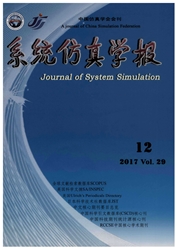

 中文摘要:
中文摘要:
在基于无线局域网定位问题中,采样点间距、接入点的个数以及环境的干扰是影响定位平均误差的重要因素,但是对于这些参数的选取目前还没有系统的指导,主要根据经验来确定。提出了一个表示定位平均误差的数学模型,形式化地全面概括了定位问题中的关键因素。基于该模型,分析了采样点间距,接入点个数和环境与定位平均误差之间的关系。仿真结果表明采样点间距取1米即可满足定位的要求,选择多于3个接入点的定位对于弥补环境干扰,减小定位误差有显著的作用。
 英文摘要:
英文摘要:
In WLAN-based location estimation problem, the grid spacing, the number of access points, and the interference of environment are key factors for average error of location estimation, however, there isn't a general strategy on how to determine these parameters. They are mostly determined by experience. A mathematical model of average error of localization was proposed, which formally described the key factors for errors in WLAN-based location estimation. Based on the model, the relationship between the average error and these factors was analyzed. Simulation results show that it satisfies to localize users with a grid spacing of one meter and using more than three access points can remarkably reduce the average error of location estimation and alleviate the environmental interference.
 同期刊论文项目
同期刊论文项目
 同项目期刊论文
同项目期刊论文
 期刊信息
期刊信息
